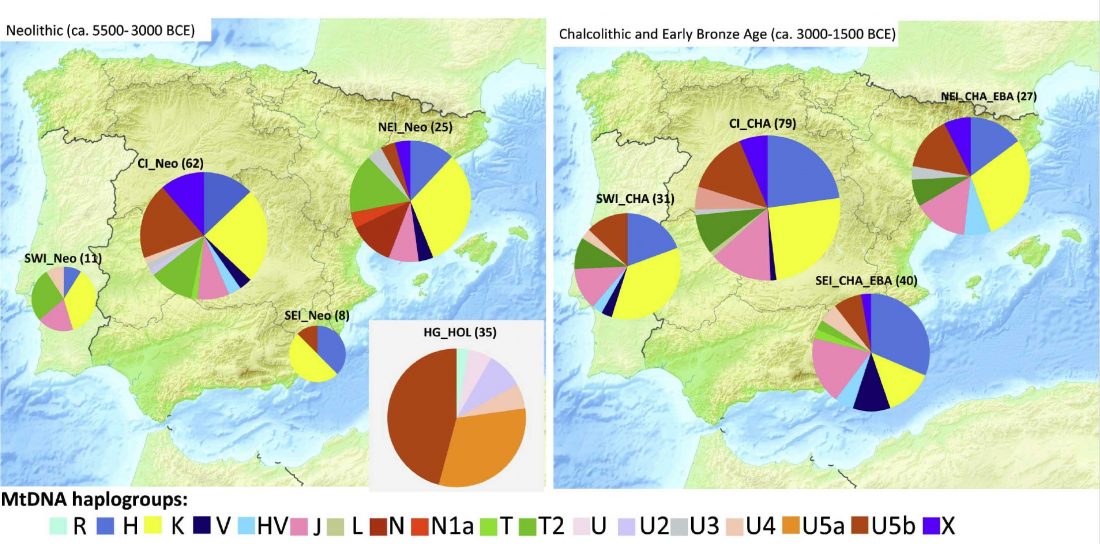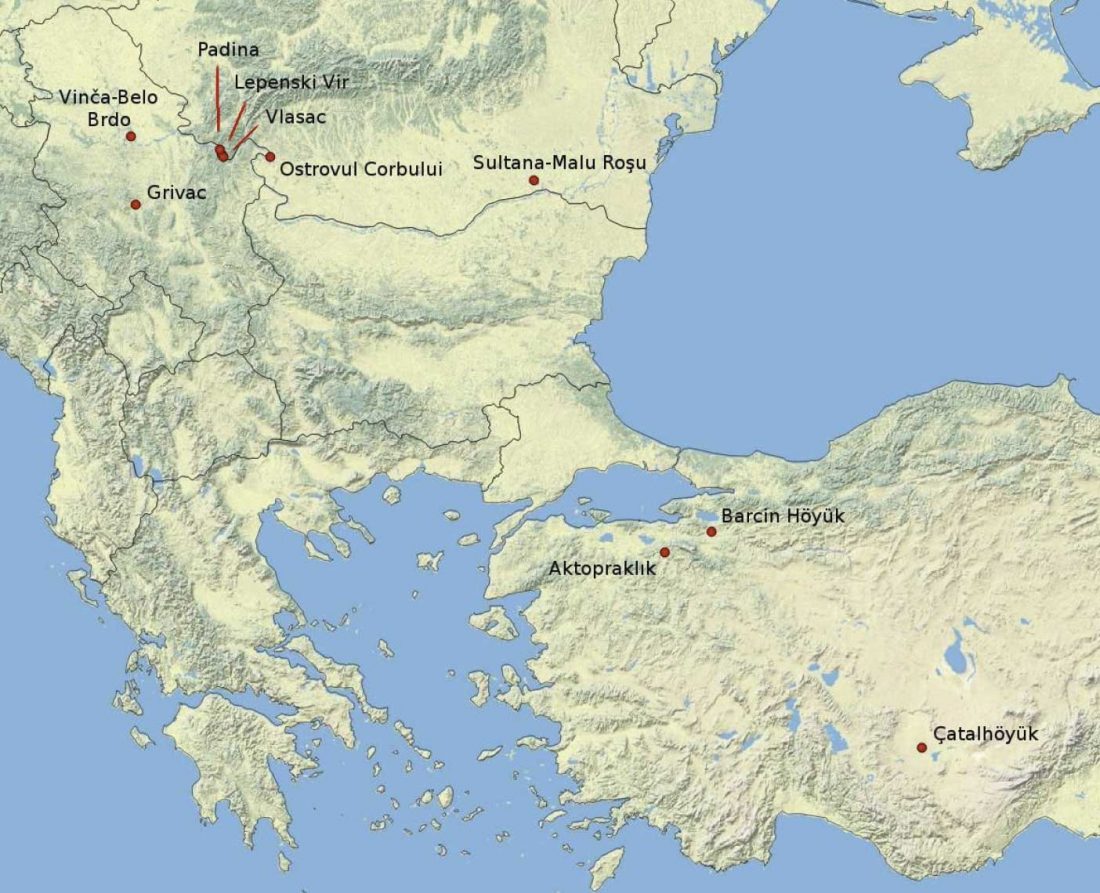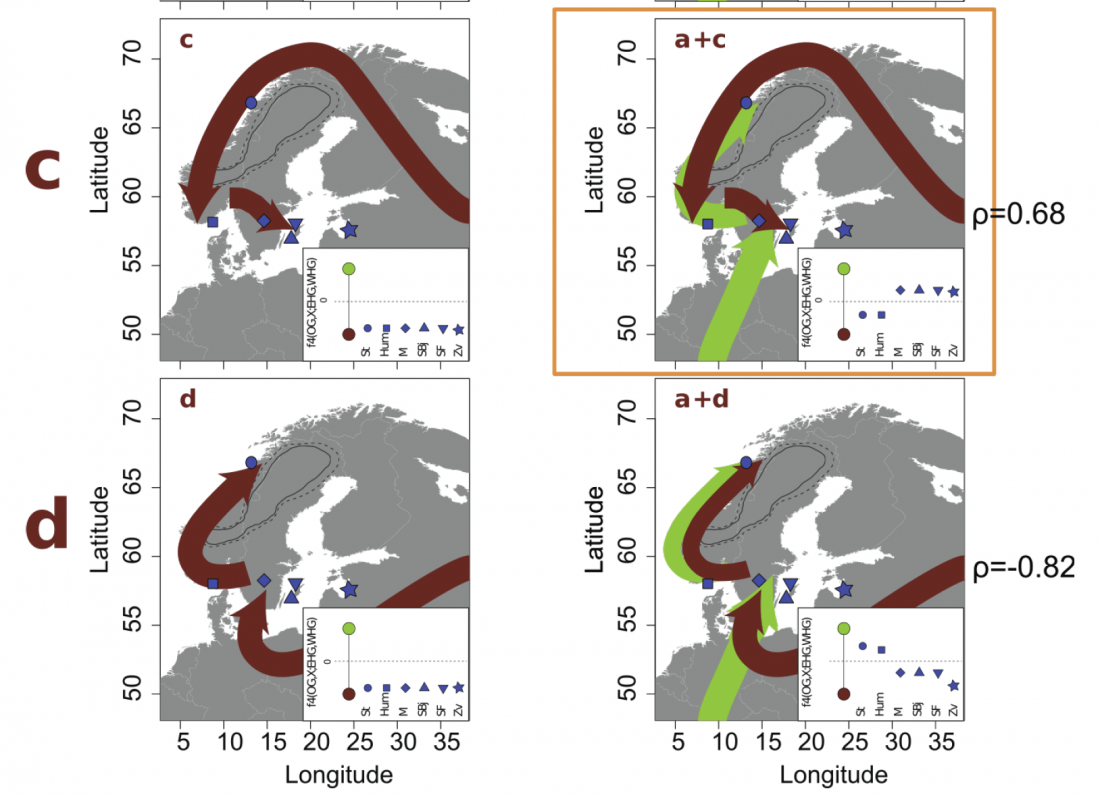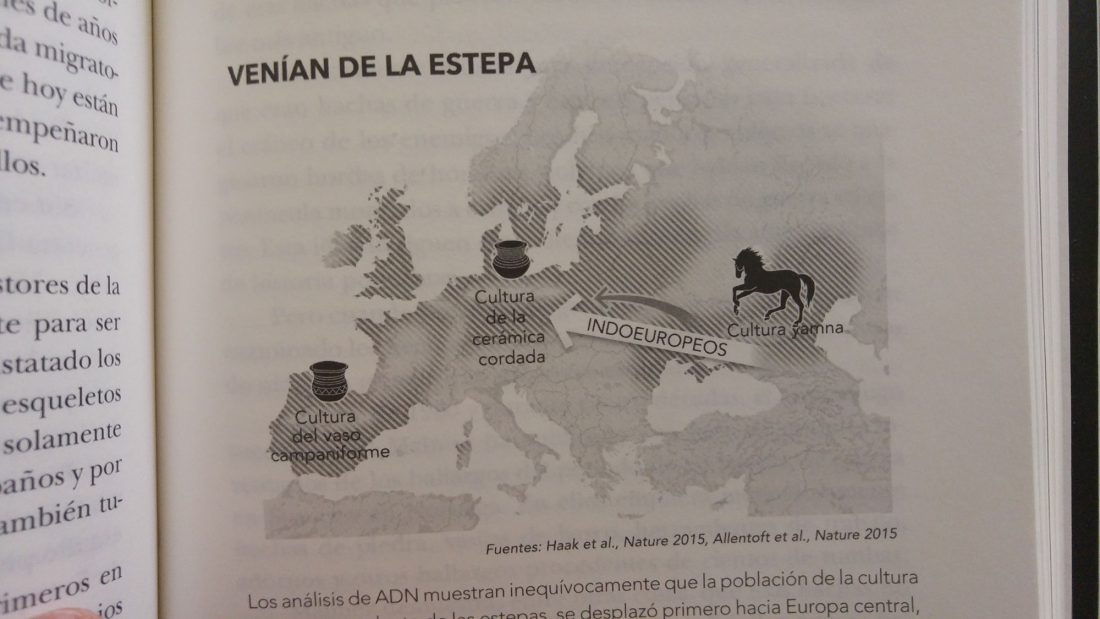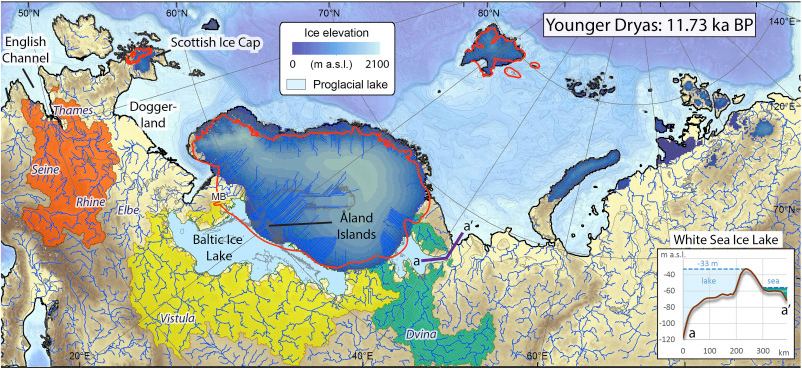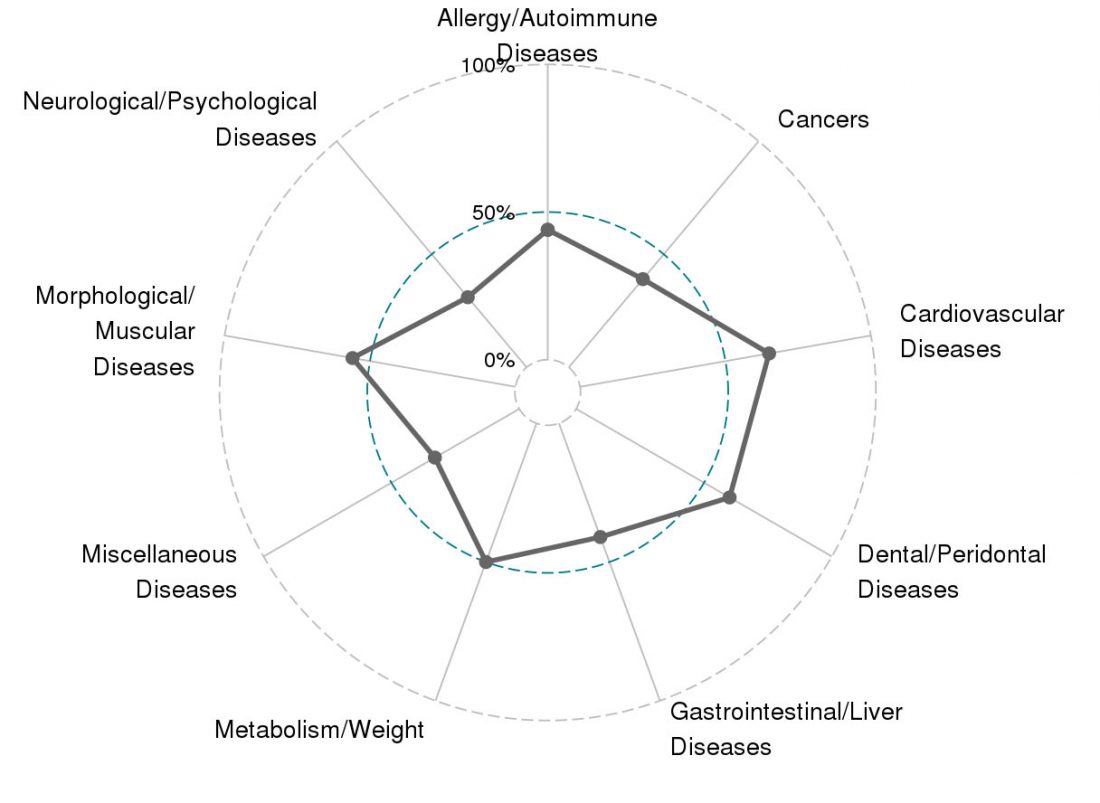A new preprint paper at BioRxiv, The maternal genetic make-up of the Iberian Peninsula between the Neolithic and the Early Bronze Age, by Szécsényi-Nagy et al. (2017).
Abstract:
… Read the rest “Iberian Peninsula: Discontinuity in mtDNA between hunter-gatherers and farmers, not so much during the Chalcolithic and EBA”Agriculture first reached the Iberian Peninsula around 5700 BCE. However, little is known about the genetic structure and changes of prehistoric populations in different geographic areas of Iberia. In our study, we focused on the maternal genetic makeup of the Neolithic (~ 5500-3000 BCE), Chalcolithic (~ 3000-2200 BCE) and Early Bronze Age (~ 2200-1500 BCE). We report ancient mitochondrial DNA results of 213 individuals (151 HVS-I sequences) from the northeast, central,
